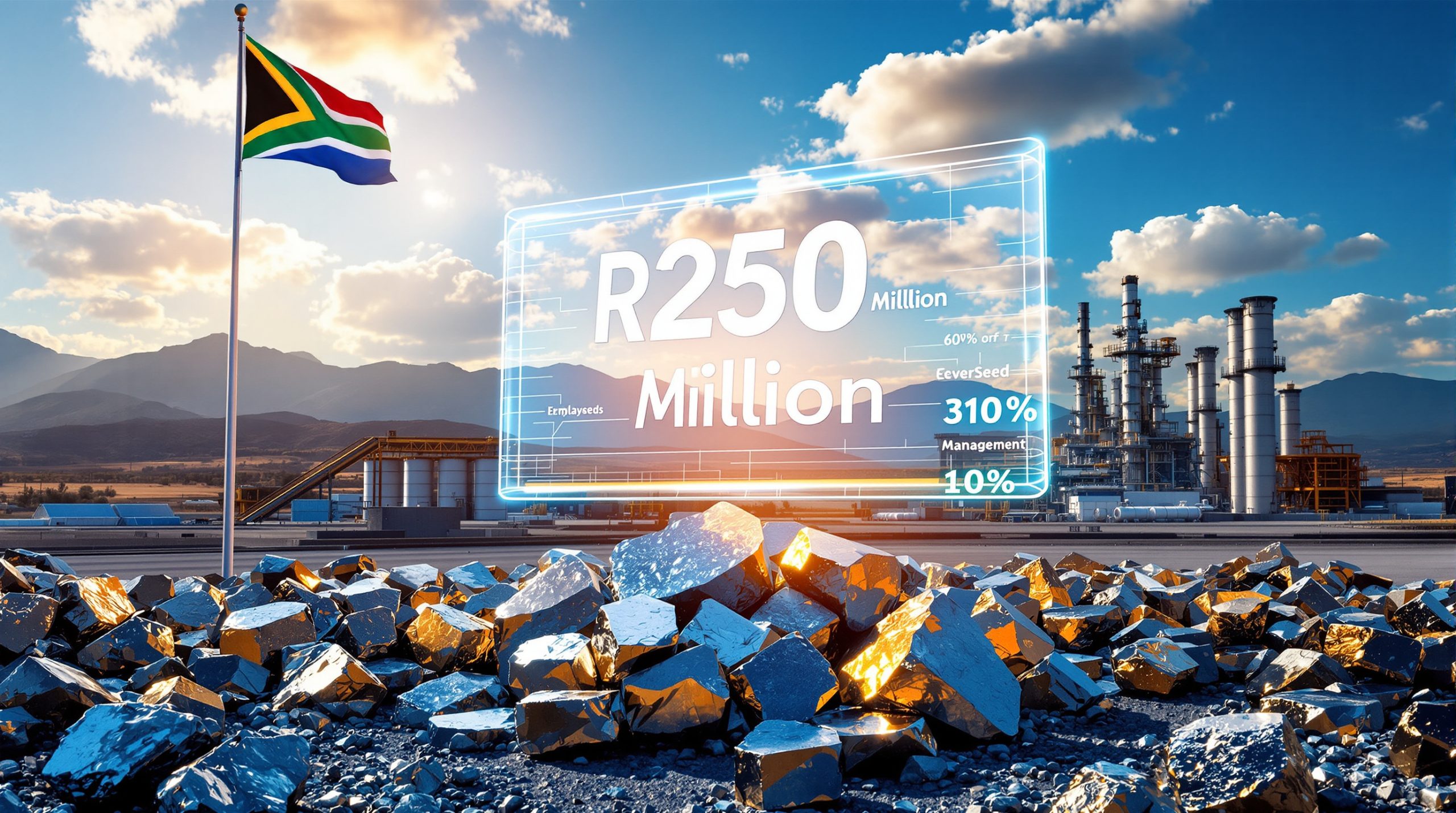What's Driving Copper Prices in 2025?
The copper market has undergone significant evolution over recent decades, with prices maintaining a general upward trajectory despite periods of volatility. A particularly revealing indicator emerges when examining copper against gold—traditionally viewed as "real money"—suggesting copper may be substantially undervalued based on historical relationships.
The Gold-Copper Relationship
Gold has recently surged to approximately $3,300 per ounce, while copper prices have moved more conservatively around $5 per pound. This divergence creates a compelling opportunity, as copper typically follows gold's trajectory over time. The copper-to-gold ratio currently sits at 0.0015, approximately 42% below its 20-year average—indicating that despite nominal price increases, copper remains relatively inexpensive in "real money" terms.
This price dynamic persists despite significant cost inflation across the mining sector:
- Exploration expenses up 22% since 2020
- Development costs rising 18-20% annually
- Extraction expenses climbing with deeper ore bodies
- Energy inputs averaging 31% higher than pre-pandemic levels
Warehouse Stocks and Price Movements
Warehouse inventory levels provide critical signals for short-term copper price dynamics:
| Warehouse Location | Recent Trend | Magnitude | Duration | Price Impact |
|---|---|---|---|---|
| London Metal Exchange (LME) | Sharp decline | 62% reduction | 6 months | Significant upward pressure |
| Shanghai Futures Exchange | Continued drawdown | 45% decrease | Year-to-date | Supporting regional premiums |
These coordinated inventory drawdowns suggest robust physical demand is outpacing immediate supply, typically a precursor to sustainable price appreciation. Historically, LME stock levels below 150,000 tonnes have preceded multi-year bull markets in copper.
Global Energy Trends Supporting Copper Demand
Record Electricity Consumption Growth
According to the International Energy Agency's latest Global Energy Review, worldwide energy demand grew by 2.2% in 2024, outpacing the previous decade's average. Even more significantly, electricity demand surged by 4.3%—exceeding global GDP growth of 3.2% by a substantial margin.
This exceptional electricity demand growth stems from three primary factors:
- Record-breaking global temperatures increasing cooling requirements
- Accelerating electrification across industrial processes and transportation
- Explosive growth in AI infrastructure and data center power consumption
Cooling Degree Days Impact
Cooling degree days (a measurement of when air conditioning is needed) increased by approximately 20% compared to the 2000-2020 average. In India and Southeast Asia, cooling degree days spiked by 35%, creating unprecedented electricity demand in densely populated regions with rapidly expanding middle classes.
This climate-driven demand surge added an estimated 74 million tons of CO2 emissions from coal-fired power generation for air conditioning alone, paradoxically accelerating investments in copper-intensive grid upgrades and renewable energy systems.
Sectoral Electricity Consumption
Building-related electricity consumption has seen the most dramatic growth, with an estimated 440 terawatt-hours of additional demand primarily from:
- Commercial AI infrastructure (28% of new demand)
- Residential and commercial air conditioning (52%)
- Data center expansion (11%)
- Other building electrification (9%)
Regional grid modernization projects reflect this trend. Thailand's $2.4 billion grid upgrade initiative, for example, targets 15% copper cable capacity increases by 2026 to accommodate rising cooling demand in urban centers.
Electric Vehicle Market Expansion
The electric vehicle sector remains a fundamental driver of copper demand growth, with each battery electric vehicle (BEV) requiring approximately 83kg of copper versus just 22kg in traditional internal combustion engine vehicles.
Total EV-related copper demand is projected to reach 3.4 million tons in 2025, representing approximately 14% of global copper market 2025 consumption:
| Region | 2024 Sales | 2025 Projection | YoY Growth | Copper Intensity Trend |
|---|---|---|---|---|
| China | 8.2M units | 9.7M units | 18.3% | Increasing with higher-range models |
| Europe | 3.1M units | 3.6M units | 16.1% | Stable with modest efficiency gains |
| United States | 1.6M units | 2.3M units | 43.8% | Rising with larger vehicle preferences |
| Rest of World | 1.4M units | 1.8M units | 28.6% | Climbing as adoption accelerates |
Technological developments within the EV ecosystem are increasing per-vehicle copper requirements. BMW's next-generation Gen6 drivetrains, for instance, utilize 92kg of copper per vehicle according to their 2024 investor presentations—10.8% more than previous models despite efficiency improvements.
"The transition to electric mobility represents the single largest sectoral shift in copper demand since the mass electrification of the early 20th century," notes industry analyst Merlin M Johnson in his Copperboted series. "Each percentage point of global fleet conversion adds approximately 95,000 tonnes of copper demand annually."
How Is Chinese Investment Shaping Global Copper Supply?
Strategic Mineral Acquisition
Chinese entities have established a dominant presence in global copper mining through Belt and Road Initiative (BRI) investments. As of 2024, approximately 46% of China's transition mineral investments target copper projects, with particular focus on the Democratic Republic of Congo (DRC) and Peru.
Major Chinese-backed copper projects include:
- Kamoa-Kakula (DRC): Expanding to 600,000 tonnes annual production
- Toromocho (Peru): 200,000 tonnes annual production
- Las Bambas (Peru): 320,000 tonnes annual production
- Tenke Fungurume (DRC): 270,000 tonnes annual production
These strategic investments provide China with effective control over approximately 31% of global copper reserves through African projects alone. The financing terms for these BRI mining ventures typically feature interest rates averaging 2.8% over 15-year terms—significantly more favorable than commercial alternatives for many developing nations.
Shifting Import Patterns
A transformative shift in Chinese copper sourcing occurred in 2024, with the DRC officially surpassing Chile as China's largest source of refined copper. DRC copper exports to China reached 1.8 million tonnes versus Chile's 1.2 million tonnes, reflecting China's strategic pivot toward African mineral resources.
This realignment of global copper trade flows reduces China's exposure to South American political risks while consolidating Beijing's influence over critical African mining jurisdictions. The shift also creates potential supply vulnerabilities for Western economies competing for the same copper resources.
What's Happening with Chilean Copper Production?
Investment Pipeline
Chile, historically the world's dominant copper producer, has outlined approximately $83 billion in mining investment projects, with roughly 75% directed toward copper developments. Despite this substantial capital commitment, Chile's copper trends face significant headwinds:
- Escondida expansion delays have extended timelines by 12 months
- Water scarcity has reduced Codelco's output by 14% at key operations
- Declining ore grades require more processing for equivalent metal production
- Labor disputes have disrupted multiple major operations
According to Chile's copper commission (Cochilco), these challenges are expected to keep production relatively flat:
- 2024 production: ~5.4 million tonnes
- Peak production (next 3 years): ~6 million tonnes
- 2034 projection: ~5.5 million tonnes
This production plateau from the world's leading copper nation creates concerning supply implications during a period when global demand growth necessitates significant expansion.
Global Market Share
Chile's projected market share of global copper production is expected to hover between 24-27% over the coming decade, down from historical levels exceeding 30%. Codelco CEO Máximo Pacheco notes that "Chile's ore grades have fallen 30% since 2010," requiring substantially more investment to maintain existing production levels.
The DRC is likely to gain relative importance as a supplier, potentially challenging Chile's dominant position within the next decade if current investment and production trends continue.
Will Canada Accelerate Mining Permit Approvals?
The question of whether Canada will streamline its mining permitting process remains contentious. Despite growing recognition of critical minerals' importance to energy transition, Canadian copper projects face permitting timelines averaging 12.7 years versus 6.3 years in Chile and 7.5 years in Australia.
This regulatory burden has created a 23% investment gap compared to U.S. initiatives following the Inflation Reduction Act's critical minerals provisions. Climate policy advocates in influential positions, including former Bank of England governor Mark Carney, have shown resistance to fast-tracking mining approvals despite the contradiction with electrification goals.
"Canada faces a profound disconnect between climate ambitions and mining realities," observes Johnson. "The same voices advocating for aggressive decarbonization often oppose the very mining projects required to achieve it."
Recent attempts to reform the Impact Assessment Act have stalled, suggesting significant permitting acceleration remains unlikely despite Canada's vast geological potential for copper discoveries.
Which Copper Exploration and Development Companies Show Promise?
Growth-Stage Developers with Exceptional Drill Results
Several companies have reported outstanding drill results positioning them for potential market revaluation:
ATEX Resources (Valeriano Project, Chile)
- Remarkable intercept: 1.2 km at 0.91% copper equivalent
- Market cap growth: From ~$200-250M to $568M in 15 months
- Share price appreciation: +47% year-over-year
- Five diamond drill rigs operating with expanding high-grade zone
- Resource: 1.4 billion tonnes with substantial growth potential
- Technical highlight: Hypogene enrichment zones showing 1.5% copper over 400m vertical extent
- Phase 6 drilling targeting expansion to 2+ billion tonnes
NGX Minerals
- Multiple high-grade intercepts: 2.8-8.0% copper equivalent over significant widths
- Market capitalization: $2.5 billion
- Share price: +25% year-over-year
- Exceptional deposit quality with strong institutional backing
- Recently attracted strategic investment from major producer
Dundee Precious Metals (Čukaru Peki, Serbia)
- Impressive intercept: 3% copper over 190 meters
- $3 billion producer with diversified asset portfolio
- Share price: +72% year-over-year
- Project advancing through definitive feasibility studies
- Metallurgical testing confirms 94.2% copper recovery rates
Emerging Explorers with Momentum
Fitzroy Minerals (Cabayas, Chile)
- Recent discovery: 200m of 0.46% copper and 591 ppm molybdenum
- High-grade zone: 42m at 1.12% copper, 1,764 ppm molybdenum, and 0.23 g/t gold
- Market capitalization: $37 million
- Share price: +50% year-over-year
- Extensive strike length potential along 10km structural corridor
- Regional setting analogous to world-class Andina-Los Bronces district
Gladiator Metals (White Horse, Yukon)
- Outstanding results: 11.52m at 7.54% copper within 26m at 3.6%
- Additional values: 0.8 g/t gold, 7 g/t silver, 324 ppm molybdenum
- Market capitalization: Under $50 million
- Share price: +75% year-over-year
- 13 additional drill holes pending results
- High-grade mineralization open at depth and along strike
- Project accessible via existing road infrastructure
Medallion Metals
- Resource: 5.6 million tonnes at 4.3 g/t gold and 0.6% copper
- Transitioning from exploration to development strategy
- Low-capex path to production being evaluated
- Strong share price performance reflecting strategic shift
- Metallurgical work indicates potential for premium concentrate
What Makes a Successful Copper Investment in Today's Market?
The most successful copper investments typically demonstrate three key attributes that combine to drive outperformance:
1. Growth Potential
Successful copper investments need clear pathways to resource expansion or production increases. This might manifest as:
- Drill programs extending known mineralization
- Acquisition of adjacent properties
- Process improvements increasing recovery rates
- Production ramp-up milestones
- Resource category upgrades (inferred → measured & indicated)
2. Momentum Factors
Market perception and capital flows significantly impact share price performance:
- Consistent positive news flow
- Institutional investment validation
- Analyst coverage expansion
- Trading volume increases
- Technical chart patterns confirming uptrends
3. Value Proposition
Even growing companies with momentum need attractive valuations:
- Enterprise value per pound of copper equivalent resources
- Price-to-NAV ratios below peer averages
- Cash position supporting planned activities without dilution
- Jurisdiction premium/discount appropriately priced
- Takeover potential based on strategic asset quality
Companies that integrate these three elements tend to outperform during both sector-specific rallies and periods of broader market volatility. Examples include ATEX Resources' 250% two-year return driven by growth (resource expansion), momentum (consistent high-grade results), and value (significant discount to larger peers on a per-pound basis).
How Are Copper Supply-Demand Fundamentals Evolving?
Despite the International Copper Study Group forecasting modest surpluses in the near term (approximately 240,000 tonnes in 2025), several structural factors suggest potential market tightness developing by 2026:
1. Electricity Demand Intensity
Global electricity demand growth at 4.3% is outpacing GDP growth of 3.2%, increasing the copper intensity of economic expansion. AI infrastructure alone is driving a 3.2% annual increase in copper demand per unit of GDP.
2. Building Sector Electrification
The building sector accounts for the largest share of incremental electricity consumption, creating substantial copper demand for wiring, transformers, and cooling systems. This trend appears structural rather than cyclical.
3. Limited Production Growth in Traditional Regions
Chile's production plateau despite $83 billion in investments illustrates the challenges facing traditional copper jurisdictions, where declining grades require more capital for equivalent output.
4. Permitting Challenges in Developed Nations
Western economies' permitting timelines (averaging 12.7 years in Canada) create significant barriers to new supply, extending the timeline for meaningful production growth.
5. Growing Chinese Control of African Copper
China's dominant position in DRC copper production (31% of reserves) potentially constrains market availability for non-Chinese consumers, particularly as geopolitical tensions rise.
These factors combine to create a projected 2026 deficit of approximately 780,000 tonnes that expands further into the decade without significant new project development.
What Should Investors Watch for in Copper Markets?
Key indicators to monitor include:
1. Warehouse Inventory Levels
Continued drawdowns in LME and Shanghai stocks below 150,000 tonnes and 30,000 tonnes respectively would signal imminent price support.
2. Chinese Construction and Manufacturing Data
As China consumes approximately 54% of global copper, its real estate and manufacturing sectors remain critical drivers of near-term demand and price movements.
3. EV Sales Growth Rates
The copper intensity of electric vehicles (83kg vs. 22kg for ICE vehicles) makes adoption rates a key determinant of incremental demand. Each 1% of global fleet conversion adds approximately 95,000 tonnes of copper demand.
4. Data Center and AI Infrastructure Expansion
A single large-scale AI data center requires between 10,000-15,000 tonnes of copper for power infrastructure, making the pace of expansion a critical demand driver.
5. New Project Permitting Timelines
Delays in approvals for major projects like Resolution Copper (Arizona) and Highland Valley expansion (Canada) would exacerbate future supply constraints.
6. Gold-Copper Ratio
The ratio at 0.0015 remains 42% below 20-year averages, suggesting potential reversion that would benefit copper prices.
The combination of these factors will determine copper's price trajectory through 2025 and beyond, with current indicators suggesting structural deficits emerging despite near-term balanced markets.
Conclusion
The copper market stands at a pivotal juncture where near-term surpluses mask developing structural deficits. Energy transition demands, AI infrastructure growth, and constrained supply from traditional producers create a compelling long-term investment case despite potential volatility.
Investors seeking exposure to copper market trends and investments should consider a diversified approach that includes:
- Growth-oriented explorers in tier-1 jurisdictions
- Established producers with expansion potential
- Royalty/streaming companies providing financing to the sector
With warehouse inventories at multi-year lows and copper smelting trends indicating increased activity, copper's essential role in electrification presents both tactical and strategic opportunities for
Want to Identify the Next Major Mineral Discovery?
Discovery Alert's proprietary Discovery IQ model instantly notifies investors of significant ASX mineral discoveries, turning complex data into actionable insights that could lead to substantial returns. Explore why historic discoveries have generated exceptional outcomes by visiting our dedicated discoveries page today.




